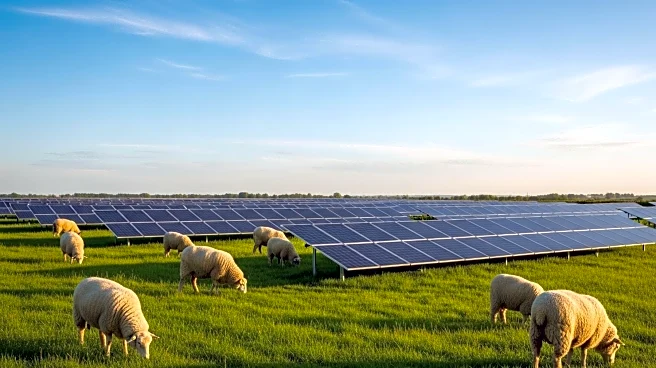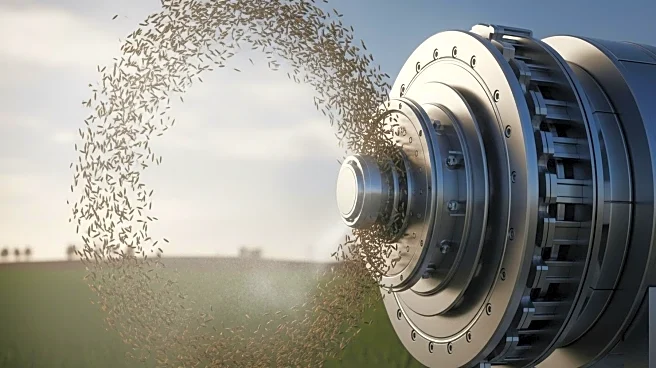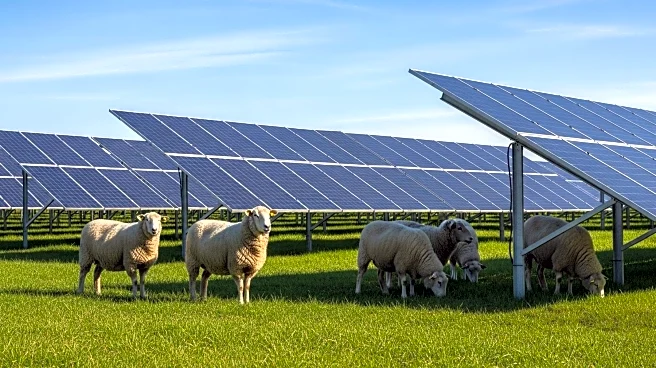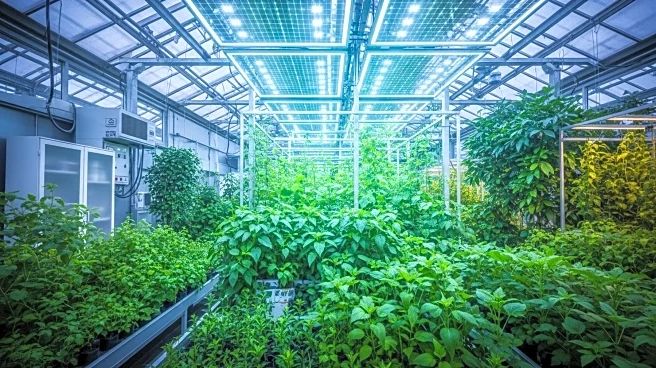What is the story about?
What's Happening?
A trial conducted at the Wellington Solar Farm in New South Wales, Australia, explored the concept of agrivoltaics, combining agriculture with solar power. Researchers allowed 1,700 Merino sheep to graze beneath solar panels, comparing their outcomes with sheep on conventional pasture. The study found that sheep grazing under panels produced higher-quality wool, with stronger fibers and faster growth. The shade from the panels provided natural shelter, reducing thermal stress and improving animal welfare.
Why It's Important?
The trial demonstrates the potential of agrivoltaics to enhance both renewable energy production and agricultural productivity. By integrating solar panels with livestock grazing, the approach offers a win-win solution for land use, improving animal welfare and reducing maintenance costs. The findings suggest that agrivoltaics could transform how land is used, supporting biodiversity and rural economies while promoting sustainable energy practices. The concept aligns with global efforts to balance energy production and agricultural needs.
What's Next?
The success of the trial may encourage further exploration of agrivoltaics in different regions and climates. As the concept gains traction, it could lead to increased adoption of dual-use systems, integrating renewable energy with agriculture. Researchers may focus on optimizing agrivoltaic layouts to balance light for vegetation and access for livestock, enhancing the benefits for both energy production and farming. The approach may influence policy decisions and encourage collaboration between energy and agricultural sectors.
Beyond the Headlines
Agrivoltaics represents a shift towards more sustainable land use practices, highlighting the potential for collaboration between technology and agriculture. The concept challenges traditional land use models, offering innovative solutions for energy and food production. By merging clean energy and farming, agrivoltaics supports environmental preservation and rural development, contributing to a more sustainable future. The trial's success may inspire further research and investment in dual-use systems.
AI Generated Content
Do you find this article useful?













